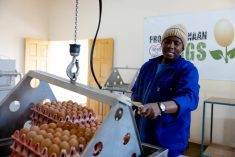What does corn cost? Not the price per bushel, or the tag on a can of niblets in the grocery store.
What is the true cost of rolling fields of corn and how does this compare to the millions it brings to local economies?
In a 2020 study published in Scientific Reports, Australian ecological economist Harpinder Sandhu and his associates used Minnesota corn as a case study to capture hidden costs and benefits of agriculture and food systems.
The study, while not exhaustive, concluded that conventional corn production yielded revenue of about $1,500 per hectare (just over $600/acre) in 2017 dollars. However, the combined environmental and health cost of corn production in the state was about $650 per hectare (roughly $260/acre).
Read Also

Seeding Indigenous agricultural prosperity
National Circle for Indigenous Agriculture and Food says Indigenous agricultural success needs strong relationships.
These costs included quantifying and monetizing the change in residents’ well-being relative to intensive corn production in their area. The researchers found a statistically significant association between corn production intensity where people live and their health. They theorized water and air pollution might be to blame, but didn’t come to a definite conclusion.
The study illustrated a point Sandhu made to an online audience in the first day of the Canada Organic Trade Association’s Organic Summit on January 17: the cost and benefit of an agricultural system hasn’t been counted unless all of its costs and benefits — economic, social and environmental — have been counted.
Current ag economic systems mainly count conventional inputs and outputs. “There are a number of these environmental and social and economic impacts that go unnoticed,” he said.
Much of what’s called modern agriculture ties back to the Green Revolution, a series of major advances in crop genetics, technology and farming practices in the mid-20th century. It led to enormous increases in food production.
However, said Sandhu, it also had unintended consequences.
He gave examples from around the world.
Intensive animal feeding operations in the United States contributed to the disappearance of mixed farms and of some local jobs. Subsidies to grain growers and federal farm bills let grain prices fall. Increased meat consumption impacted people’s health, as did air and water pollution.
Soybean farming in South America contributed to loss of biodiversity and rainforests, and polluted the water supply with nitrogen. Drinking polluted water led to increased health risks.
Sandhu called these systems ‘top down.’ These approaches prioritized food quantity and viewed food as a commodity for trade, which led to maximizing productivity per hectare through technology, investment and policy.
And yet, he noted, people are still going hungry.
In a paper Sandhu published in January 2021, he wrote, “Despite sufficient calories being produced by global agriculture, there are over 800 million hungry people today and over two billion who do not have regular access to nutritious food.
“Addressing these challenges,” he wrote, “requires a co-ordinated and global effort much like the Green Revolution of the 1960s, but with more careful consideration for the environment and society.”
Sandhu advocated for what he called a “bottom-up” approach.
“First we measure impacts, and then we create value,” he told his online audience.
First consider social indicators of the region — nutritional needs, cultural and dietary needs, livelihood opportunities, etc. Look at the unique geography and biophysical constraints of an area, and look at what technologies are available or appropriate to be used. Then use these indicators to develop farming systems.
“As long as we take care of these three main indicators and develop something that is locally relevant and more sustainable, then I think we’ll be able to transform our world food system in a positive way,” Sandhu said.
Food systems are not one size fits all, Sandhu added.
“One type of strategy is not going to work,” he said.
















